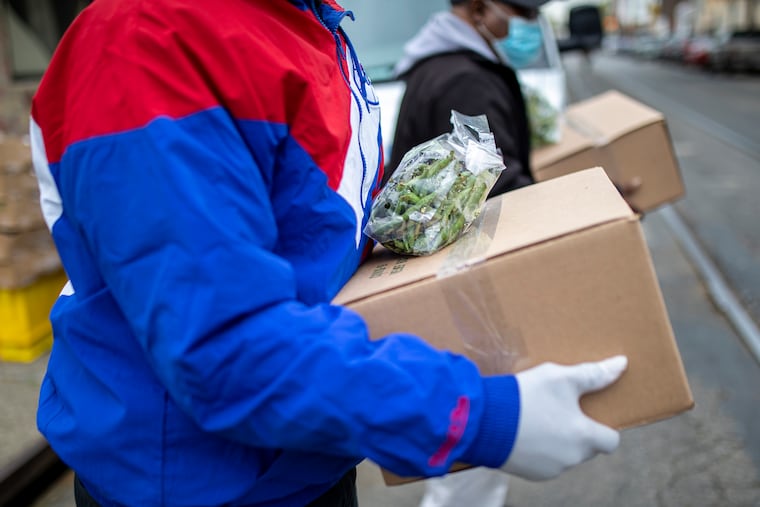Devastating poverty is the bridge that joins Pa.’s rural counties and urban cities | Opinion
A bold national strategy to boost economic opportunity and mobility in the most impoverished rural and urban counties can help bridge this deep divide.

Editor’s note: A previous version of this op-ed inaccurately stated the poverty rate and median household income of Pike County, Pa. The error has been corrected.
Rural counties in Northern battleground states — which are overwhelmingly white and Republican — seemingly share little in common with diverse, Democratic big cities.
Philadelphia, which is nearly two thirds non-white, gave its votes to Joe Biden by a 63-point margin. Meanwhile, Donald Trump won rural, McKean County, Pennsylvania — which is 95% white — by 46 points.
Yet something surprising unites Philadelphia and Pike County: very high rates of poverty and exceedingly low average incomes.
Even pre-pandemic, Philadelphia had the highest poverty rate of any big city — 24% — and a median household income of $43,744. McKean County had a poverty rate of 16.8% and a median household income of $46,953. (In comparison, the national poverty rate was 11% and the median household income was $60,293.) In fact, there were more than two dozen counties in Pennsylvania with high poverty rates and with median household rates below $50,000 per year; they, too are overwhelmingly white and rural and gave massive pluralities to Trump.
Likewise, while Wayne County, Michigan (home of Detroit) and Cuyahoga County, Ohio (home of Cleveland), have large non-white populations, high poverty rates, and a historic propensity to vote for the Democratic Party, both states have large numbers of high poverty, including in mostly white, rural counties that also overwhelmingly supported Trump.
The reasons for the disparities between economic conditions and voting behaviors are clear: race and culture. After the Democratic Party embraced civil rights, reproductive choice, gun safety legislation, and LGBTQ rights, rural white voters — even very poor ones — swung heavily to the G.O.P.
What, if anything, can help bridge this deep divide? The best hope is for President-Elect Biden and Congress to team up to implement a bold national strategy to boost economic opportunity and mobility in the most impoverished rural and urban counties.
» READ MORE: Number of households with hungry children nearing 14 million, study finds
In 2019, 58.8 million U.S. residents lived below 200% of the poverty line. That means that, even pre-pandemic, nearly one in five Americans lived in near poverty, pushing the great American middle class even closer to extinction.
Even though the largest number of impoverished Americans are white, the racial disparities in U.S. family income are vast. In 2019, when the nation’s median family income was $68,703, it was $76,057 for non-Hispanic whites, $45,438 for Blacks, and $56,113 for Hispanics.
As vast as these differences in income are, the differences in assets are a veritable Grand Canyon. According to the Federal Reserve, in 2016, the typical white family had eight times the wealth of the typical Black family and five times the wealth of the typical Hispanic family.
Since the pandemic hit, all these problems have gotten far worse, and an estimated 50 million Americans, including 18 million American children, becoming food insecure, unable to afford enough food.
The good news is that — based on a poll that Hunger Free America just conducted among 800 low-income Americans nationwide — we know that urban, rural and suburban Americans (and people of all races) actually agree on key points of a policy agenda for boosting economic opportunity and mobility. All strongly support: a minimum wage hike, a guarantee of living wage jobs, the increased use of modern technology to enable them to access government benefits and banking services more easily, and a boost in the SNAP (formerly called the Food Stamp) program.
» READ MORE: How America’s approach to poverty could change in a Biden administration, Congress willing
Republicans, Independents, and Democrats all agree by large margins that the nation must to do more to promote long-term upward mobility for themselves and others. They desperately want the society to ensure that, when they work hard, they not only are able to meet basic living expenses, but that they are also able to buy their own homes, start their own small businesses, send their kids to college, and set aside sufficient funds for a comfortable retirement. They understand the importance of moving from owing to owning.
Policy makers should thus advance a broad “Aspiration Empowerment/Middle Class Wealth Generation Agenda,” which would give all families the opportunity to advance their dreams through learning, earning, and saving their way out of poverty.
These economic and social policies won’t, in and of themselves, bridge racial and cultural divides build up over decades. But equally helping people in both urban and rural communities is a darn good start.
Joel Berg is CEO of Hunger Free America, a national nonprofit direct service and advocacy organization.